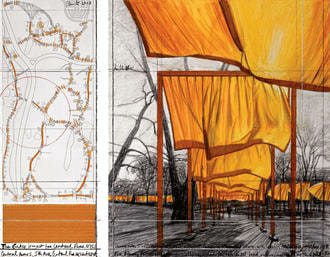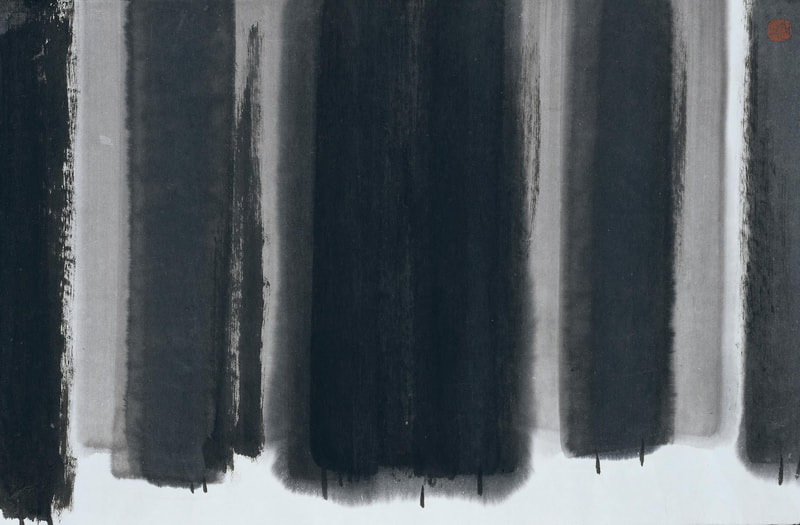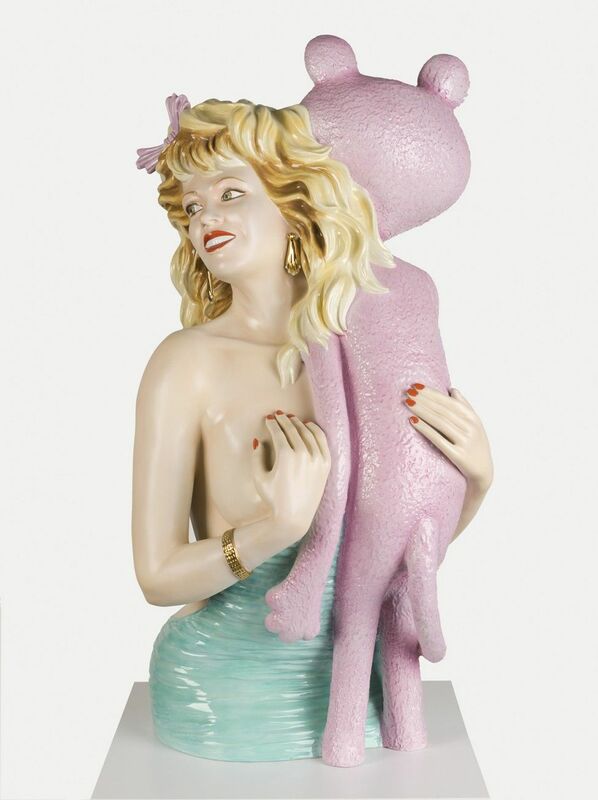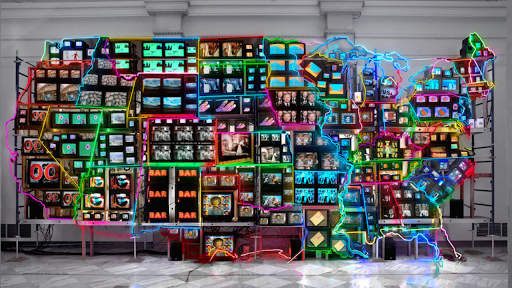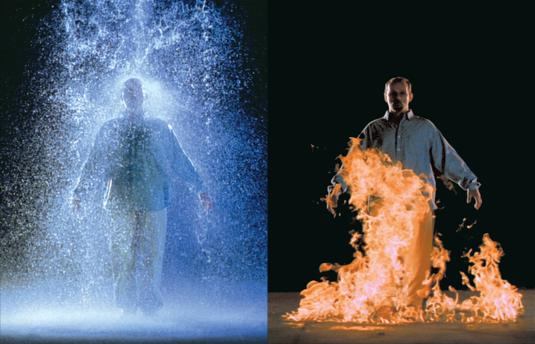- Home
-
PHOTO 1
-
PHOTO 2
-
PHOTO 3
- INFO >
- CLASS NOTES
-
ASSIGNMENTS
>
- STUDIO LIGHTS
- Composing: Creating an Abstract or Geometric Composition
- Composing: Creating an Abstract or Geometric Composition
- EMPHASIS ON COLOR THEORY
- DESIGNING IN B&W
- Formal and Informal Portraits
- CUBIST PORTRAITS
- NATURAL LIGHTING
- COMPOSITION - SCAVENGER HUNT
- STREET PHOTOGRAPHY
- MANDALA
- NIGHT
- RHYTHM & REPETITION
- PATTERNS & RHYTHM WITH LIGHT
- STUDIO PORTRAITURE
- PHOTOGRAM - MEMOIRS - THE DIGITAL VERSION
- HDR Landscapes
- PORTFOLIO
- VIDEOS
- HANDOUTS
- GALLERY
-
AP 2D ART + DESIGN
- INFO >
- SUMMER PROJECT
- SUSTAINED INVESTIGATION
- ELEMENTS + PRINCIPLES
- STUDIO LIGHTS
-
ASSIGNMENTS
>
- DESIGNING IN B&W
- COLOR THEORY
- TRIPTYCH
- SUSTAINED INVESTIGATION #1
- SUSTAINED INVESTIGATION #2
- SUSTAINED INVESTIGATION #3
- SUSTAINED INVESTIGATION #4
- SUSTAINED INVESTIGATION #5
- SUSTAINED INVESTIGATION #6
- SUSTAINED INVESTIGATION #7
- SUSTAINED INVESTIGATION #8
- SUSTAINED INVESTIGATION #9
- SUSTAINED INVESTIGATION #10
- ABSTRACT & GEOMETRIC COMPOSITION
- STUDIO PORTRAITURE
- TEXTURES & ABSTRACTIONS FROM THE...
- WEBSITE PORTFOLIO
- CLASS NOTES
- HANDOUTS
- VIDEOS
- GALLERY
- 3D ART 1
- 3D ART 2
- 3D ART 3
- Contact
GLOBAL CONTEMPORARY
(1980 C.E. TO PRESENT)
VOCABULARY
|
CONTENT: What do you see?
FORM: The details (what you see more exactly). How the artist delivers the content. CONTEXT: Everything NOT observable. FUNCTION: The intended purpose of the work. APAH 250 Artworks:Installation
224. The Gates, Christo and Jeanne-Claude 225. Vietnam Veterans Memorial, Maya Lin 248. Shibboleth, Doris Salcedo 238. Electronic Superhighway, Nam June Paik Identity 242. Lying with the Wolf, Kiki Smith 243. Darkytown Rebellion, Kara Walker 236. En la Barberia no se Llora (No Crying Allowed in the Barbershop), Pepon Osorio 231. Untitled (#228), from the History Portraits series, Cindy Sherman 232. Dancing at the Louvre, from the series, The French Collection, part 1; #1, Faith Ringgold Culture 235. Rebellious Silence, from the Women of Allah series, Shirin Neshat (artist); photo by Cynthia Preston 237. Pisupo Lua Afe (Corned Beef 2000), Michel Tuffery 244. The Swing (After Fragonard), Yinka Shonibare 245. Old Man’s Cloth, El Anatsui 233. Trade (Gifts for Trading Land with White People), Jaune Quick-to-See Smith 234. Earth’s Creation, Emily Kame Kngwarreye 229. A Book from the Sky, Xu Bing 250. Kui Hua Zi (Sunflower Seeds), Ai Weiwei 228. Androgyne III, Magdalena Abakanowicz 226. Horn Players, Jean-Michel Basquiat 230. Pink Panther, Jeff Koons 247. Preying Mantra, Wangechi Mutu 246. Stadia II, Julie Mehretu 227. Summer Trees, Song Su-nam 241. Pure Land, Mariko Mori 239. The Crossing, Bill Viola Architecture 152. House in New Castle County, Robert Ventura, John Rausch and Denise Scott Brown 240. Guggenheim Museum Bilbao, Frank Gehry 249. MAXXI National Museum of XXI Century Arts, Zaha Hadid What does “Global Contemporary” really mean?Global contemporary art is characterized by a transcendence of traditional conceptions of art. Global Contemporary art attempts to reach beyond the known, for art that elevates, transcending knowledge and experiences that escape our vocabulary and traditional senses. It is supported by technological developments and global awareness. Digital technology in particular provides increased access to imagery and contextual information about diverse artists and artworks throughout history and across the globe. In the scholarly realm as well as mainstream media, contemporary art is now a major phenomenon experienced and understood in a global context.
CONTEXTMaterials, tools, function, artistic training, style, and presentation are challenged. Questions about how art is defined, valued, and presented are provoked by everything from digital works to graffiti to online galleries and the decline in natural materials and traditional skills, and the predominance of disposable material cultures.
Diverse art forms are considered and include existential investigations, sociopolitical critiques, as well as reflections on the natural world, art’s history, popular and traditional cultures, and technological innovation. Artists use appropriation and “mashups” to devalue or revalue culturally sacred objects, and to negate or support expectations of artworks based on regional, cultural, and chronological associations. Intended meanings are often open-ended and subject to multiple interpretations. The iconic building becomes a sought-after trademark for cities. Computer-aided design impacts the diversity of innovative architectural forms. Art history surveys have traditionally offered less attention to art made from 1980 to the present. While such surveys often presented contemporary art as largely a European and American phenomenon, contemporary art produced by artists of Africa, Asia, Oceania, and the First Nations are receiving the same attention than work produced in Europe and the Americas. The waning of colonialism, started by independence movements, shifts in the balance of power with the collapse of Communism in Eastern Europe and the rise of China, and the development of widespread communication networks such as the Internet have all contributed to representations of the world that are global and interconnected rather than Eurocentric. The art world has expanded and become more inclusive since the 1960s. Artists of all nationalities, ethnicities, and sexual preferences, as well as female artists, have challenged the traditional privileged place of white, heterosexual men in art history. This activism has been supported by theories (e.g., deconstructionist, feminist, poststructuralist, and queer) that critique perspectives on history and culture that claim universality but are in fact exclusionary. The worldwide proliferation of contemporary art museums, galleries, exhibItions, and print and digital publications has created diverse venues for the presentation and evaluation of art in today’s world. |
GET TO KNOW YOUR ARTISTS
ZAHA HADI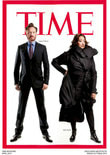
Named one of the most influential people by TIME in 2010 Just recently passed away March 31, 2016
http://www.zaha-hadid.com/people/zaha-hadid/ Great article from The Guardian- highly recommended to read. http://www.theguardian.com/artanddesign/2013/sep/08/zaha-hadid-serpentine-sackler-profile |
|
FRANK GEHRY
|
Themes: Deconstructionist architecture (seems unstable based on design and materials
|
|
JEAN CLAUDE & CHRISTO
|
Themes: Site art, environmental art
|
|
MAYA LIN
|
Themes: nature, physiological environment, history, time
. . . Lin's art explores how we experience and relate to Nature, setting up a systematic ordering of the land that is tied to history, memory, time, and language. Her interest in landscape has led to works influenced by topographies and natural phenomena." http://www.mayalin.com |
|
AI WEI WEI: SUNFLOWER SEEDS
|
Themes: propaganda, social justice, human rights, political activism, globalization, symbolism
From https://www.artsy.net/artist/ai-weiwei |
|
KARA WALKER
|
Themes: Racism, African American racial identity, sexism, classism, culture, power, dominance
|
|
JAMES TURRELL: RODEN CRATER
|
Themes: Light, space, human perception
(The video on the right is another art installation to learn about. You should make a flashcard for the Roden Crater, video link below.) From http://jamesturrell.com/about/introduction/ Click here to watch the video on the Roden Crater "For over half a century, the American artist James Turrell has worked directly with light and space to create artworks that engage viewers with the limits and wonder of human perception. Turrell, an avid pilot who has logged over twelve thousand hours flying, considers the sky as his studio, material and canvas. New Yorker critic Calvin Tompkins writes, “His work is not about light, or a record of light; it is light — the physical presence of light made manifest in sensory form.” |
|
JEAN-MICHELE BASQUIAT
|
Themes: Anatomy, artists (Picasso, Da Vinci), African American Musicians, farm satire
http://www.wikiart.org/en/jean-michel-basquiat http://www.theartstory.org/artist-basquiat-jean-michel.htm |
|
SONG SU NAM
|
Themes: traditional art techniques that are modernized
|
XU BING
|
Themes: combining modern and traditional art forms, text, reliability of knowledge, futility of existence
"Pioneering Chinese contemporary artist Xu Bing creates powerful, poignant mixed-media installations, in which he subverts systems of language, upending expectations and perception. He explains that his works “are all linked by a common thread, which is to construct some kind of obstacle to people's habitual ways of thinking—what I call the ‘cognitive structures’ of the mind.” Trained as a printmaker, Xu is informed by the Cultural Revolution, Chan Buddhism, and his keen interest in the relationship between meaning and words, writing, and reading." From https://www.artsy.net/artist/xu-bing-xu-bing http://www.xubing.com/index.php/site/texts/evolving_meanings_in_xu_bings_art_a_case_study_of_transference/ Past exhibition at LACMA Additional video to watch |
|
WANGECHI MUTU
|
Themes: violence of Colonial domination in Africa, female body, sexism, racism on a global scale
Wangechi Mutu observes: “Females carry the marks, language and nuances of their culture more than the male. Anything that is desired or despised is always placed on the female body.” Piecing together magazine imagery with painted surfaces and found materials, Mutu’s collages explore the split nature of cultural identity, referencing colonial history, fashion and contemporary African politics. In Adult Female Sexual Organs, Mutu uses a Victorian medical diagram as a base: an archetype of biased anthropology and sexual repression. The head is a caricatured mask – made of packing tape, its material makes reference to bandages, migration, and cheap ‘quick-fix’ solutions. Mutu portrays the inner and outer ideals of self with physical attributes clipped from lifestyle magazines: the woman’s face being a racial distortion, her mind occupied by a prototypical white model. Drawing from the aesthetics of traditional African crafts, Mutu engages in her own form of story telling; her works document the contemporary myth-making of endangered cultural heritage. *Quote from: Merrily Kerr, Wangechi Mutu's Extreme Makeovers, Art On Paper, Vol.8, No. 6, July/August 2004. from http://www.saatchigallery.com/artists/wangechi_mutu.htm |
|
SHIRIN NESHAT

Themes: women in art, female warriors, repressed Muslim communities
She was invited at the GLOBART Academy 2014 to open the festival with her speech "Voice of an Artist". |
|
JEFF KOONS
|
Themes:
See a fun interview with one of Jeff Koon's assistants, Jeffrey Bennet. The class came up with questions and we were able to get a response about how Koons works. http://www.mchsapah.com/blog/thank-you-jeffrey-bennett http://www.jeffkoons.com |
|
DORIS SALCEDO
|
Themes: Discrimination, gap in relationships, racism, classism, the marginalized.
http://www.art21.org/artists/doris-salcedo |
|
KIKI SMITH
|
Themes: storytelling, body images
http://www.pbs.org/art21/artists/kiki-smith |
|
NAM JUNE PAIK
|
Themes: technology as a tool, maps and traveling
From: https://www.arts.gov/photos/nam-june-paik-artist-who-invented-video-art_ |
|
BILL VIOLA
|
Themes: performance art, perception of the senses, human experiences, sacred space, religious influences
"Bill Viola (b.1951) is internationally recognized as one of today’s leading artists. He has been instrumental in the establishment of video as a vital form of contemporary art, and in so doing has helped to greatly expand its scope in terms of technology, content, and historical reach. For 40 years he has created videotapes, architectural video installations, sound environments, electronic music performances, flat panel video pieces, and works for television broadcast. Viola’s video installations—total environments that envelop the viewer in image and sound—employ state-of-the-art technologies and are distinguished by their precision and direct simplicity.... Viola uses video to explore the phenomena of sense perception as an avenue to self-knowledge. His works focus on universal human experiences—birth, death, the unfolding of consciousness—and have roots in both Eastern and Western art as well as spiritual traditions, including Zen Buddhism, Islamic Sufism, and Christian mysticism. Using the inner language of subjective thoughts and collective memories, his videos communicate to a wide audience, allowing viewers to experience the work directly, and in their own personal way." http://www.billviola.com https://www.youtube.com/watch?v=Jg19GwNCJU0 Start video at 5:28 |
|
JULIE MEHRETU
|
Themes: cities, entertainment, stadiums bringing people together
"Some days I’ll be engaged in painting, and make great headway, and then the next day I’ll come in and I have no access. You can have the whole day just feel like you’re spinning your wheels. But I think that’s part of the work—being in the studio, just looking at the work for a long time, and realizing the painting." -Julie Mehretu http://blog.art21.org/2009/10/01/meet-the-season-5-artist-julie-mehretu/#.VyDbWMe9jzI http://www.pbs.org/art21/watch-now/segment-julie-mehretu-in-systems |
|
FAITH RINGGOLD
|
Themes: quilting as a woman's art form
|
|
JUAN QUICK-TO-SEE-SMITH
|
Themes: Europeans invading the Americas, American Indian social issues (poverty, unemployment, disease, alcoholism)
"Jaune Quick-to-See Smith creates paintings and drawings that reflect her upbringing in a household where art and horses were equally important. In the initial stages of her career, Smith's painted landscapes inevitably contained a "portrait" of her horse Cheyenne shown with tepees, tools, pottery, and other Indian artifacts. Eventually Smith began to incorporate collage elements into her paintings, adding bits of calico and muslin fabric and wire mesh over which she lavished paint. The result was surfaces that acquired a texture and topography reminiscent of the landscapes she was depicting. Smith is part of the new generation of Native American artists who are helping to redefine their culture's relationship to contemporary American life and its problematic past. She lives and works in Albuquerque, in close proximity to the land that inspires much of her art." From, http://www.americanart.si.edu/collections/search/artist/?id=4505 |
|
CINDY SHERMAN
|
Themes: Identity, classism
http://www.pbs.org/art21/watch-now/segment-cindy-sherman-in-transformation_ |
|
MAGDALENA ABAKANOWICZ
|
Themes: identity
"Abanowicz being interested by the texture of matter, particularly the organic nature of her medium of choice. Abakans - made from dyed sisal fibre - with its multiplied organic nature - was shocking. At exhibitions they were suspended from the ceiling, unidentifiable monsters wrapped in canvas cloth. The artist broke with the tradition of flat surfaces of decorative textiles hung against the walls. Years later she wrote, "The Abakans irritated. They were untimely. There was the French tapestry in weaving, pop-art and conceptual art, and here there were some complicated, huge, magical (forms)..." http://culture.pl/en/artist/magdalena-abakanowicz |
|
PEPON OSORIO
|
Themes: Contradictions, identity, masculinity, culture
http://www.pbs.org/art21/artists/pepon-osorio |
|
MICHEL TUFFERY
|
Themes: Polynesian heritage, canned meat, recycled materials
|
|
YINKA SHONIBARE
|
Themes:
|
|
EL ANATSUI
|
Themes: combining different cultural traditions, recycled art
From http://www.art21.org/artists/el-anatsui |
|
MARIKO MORI
|
Themes: romanticized views of pop culture
"Mariko Mori’s diverse work, which has included video and photography, works on paper, sound, sculpture, and large-scale installations, explores the intersection between art and science, antiquity and modernity, and East and West. In her early work Mori explored urban cyberculture and kitsch, and used herself as a model in quirky photographs of fantastical Manga-inspired environments. More recently she created WAVE UFO (2003), her acclaimed capsule-shaped structure resembling a spaceship that exhibited at the 2005 Venice Biennale; visitors can enter attached to electrodes that gather brainwave data and turn it into real-time visualizations viewable on screens within the space. Mori has also examined Jomon and Celtic traditions and belief systems, fusing ancient symbols and rituals with advanced digital technologies in works such as Transcircle 1.1 (2004), a version of Stonehenge composed of glowing lights. Juxtaposing divergent cultures and disciplines such as Buddhism and science, or traditional tea ceremonies and Manga, Mori creates an aesthetic vocabulary that points simultaneously forward and backward." From https://www.artsy.net/artist/mariko-mori |
|
EMILY KAME KNGWARREYE
For virtually two-thirds of her life she had only sporadic contact with the outside world. It was not until she was about 80 that she became, almost overnight, an artist of national and international standing. Her remarkable work was inspired by her cultural life as an Anmatyerre elder, and her lifelong custodianship of the women’s Dreaming sites in her clan Country, Alhalkere." From http://www.nma.gov.au/exhibitions/utopia_the_genius_of_emily_kame_kngwarreye/emily_kame_kngwarreye |
|
EXTRA ARTISTS THAT ARE SIGNIFICANT AND ABSOLUTELY WORTH KNOWING ABOUT BUT THEY WERE LEFT OFF THE OFFICIAL LIST.
CHUCK CLOSE
|
"Chuck Close is globally renowned for reinvigorating the art of portrait painting from the late 1960s to the present day, an era when photography had been challenging painting's former dominance in this area, and succeeding in steadily gaining critical appreciation as an artistic medium in its own right. Close emerged from the 1970s painting movement of Photorealism, also known as Super-Realism, but then moved well beyond its initially hyper-attentive rendering of a given subject to explore how methodical, system-driven portrait painting based on photography's underlying processes (over its superficial visual appearances) could suggest a wide range of artistic and philosophical concepts. In addition, Close's personal struggles with dyslexia and subsequently, partial paralysis, have suggested real-life parallels to his professional discipline, as though his methodical and yet also quite intuitive methods of painting are inseparable from his own daily reckoning with the body's own vulnerable, material condition."
http://www.theartstory.org/artist-close-chuck.htm https://www.youtube.com/watch?v=lZttkbmtqKo |
"I realized that to deal with your nature is also to construct a series of limitations which just don't allow you to behave the way you most naturally want to behave. So, I found it incredibly liberating to work for a long time on something even though I'm impatient. It did not seem like such a dichotomy or a denial of who I was. It seemed like I was taking care of who I was."
-Chuck CLose |
NICK CAVE
|
Themes: repurposing found objects, social justice
From https://art21.org/watch/art-in-the-twenty-first-century/s8/nick-cave-in-chicago-segment/ Watch the Art 21 episode (beginning of video to 14:00) |
|
SHEPARD FAIREY
|
"The first aim of phenomenology is to reawaken a sense of wonder about one’s environment. The obey sticker attempts to stimulate curiosity and bring people to question both the sticker and their relationship with their surroundings."
From: obeygiant.com/propaganda/manifesto/ |
|



